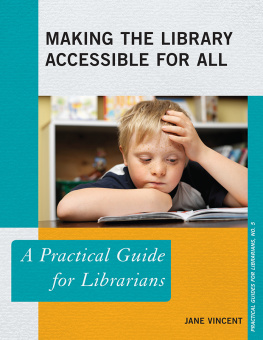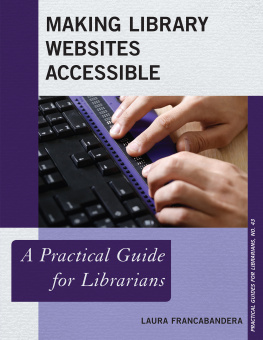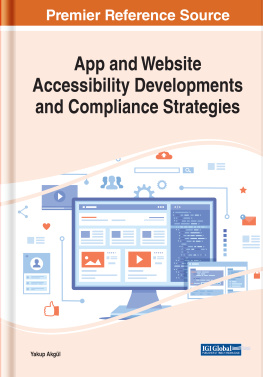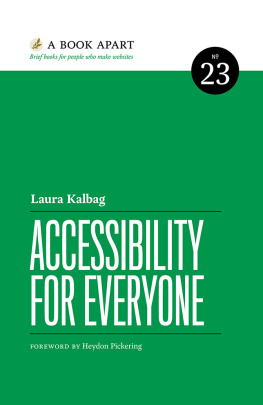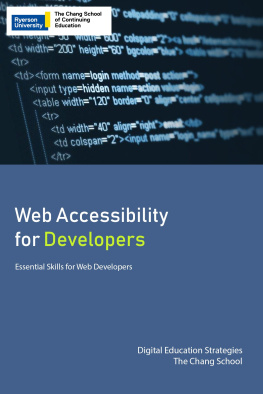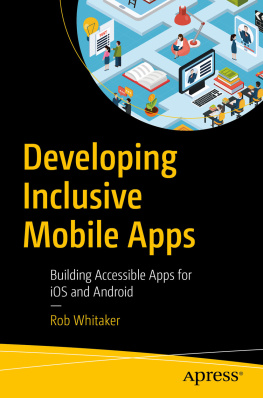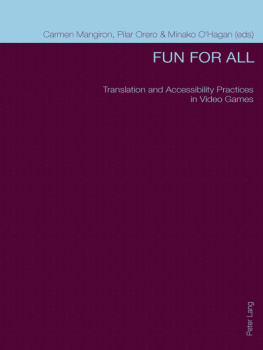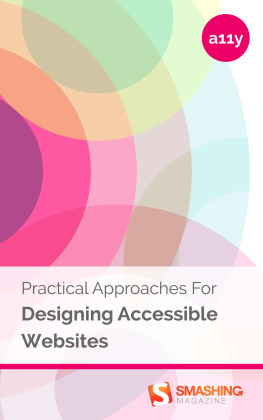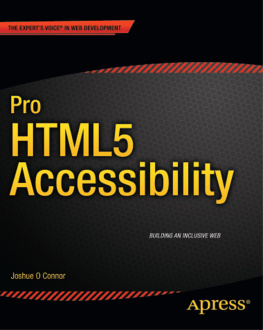Narayanan Palani - The Web Accessibility Project: Development and Testing Best Practices
Here you can read online Narayanan Palani - The Web Accessibility Project: Development and Testing Best Practices full text of the book (entire story) in english for free. Download pdf and epub, get meaning, cover and reviews about this ebook. City: Boca Raton, year: 2022, publisher: CRC Press/Auerbach, genre: Computer. Description of the work, (preface) as well as reviews are available. Best literature library LitArk.com created for fans of good reading and offers a wide selection of genres:
Romance novel
Science fiction
Adventure
Detective
Science
History
Home and family
Prose
Art
Politics
Computer
Non-fiction
Religion
Business
Children
Humor
Choose a favorite category and find really read worthwhile books. Enjoy immersion in the world of imagination, feel the emotions of the characters or learn something new for yourself, make an fascinating discovery.

- Book:The Web Accessibility Project: Development and Testing Best Practices
- Author:
- Publisher:CRC Press/Auerbach
- Genre:
- Year:2022
- City:Boca Raton
- Rating:4 / 5
- Favourites:Add to favourites
- Your mark:
The Web Accessibility Project: Development and Testing Best Practices: summary, description and annotation
We offer to read an annotation, description, summary or preface (depends on what the author of the book "The Web Accessibility Project: Development and Testing Best Practices" wrote himself). If you haven't found the necessary information about the book — write in the comments, we will try to find it.
Approximately 15% of the global population is affected by some sort of disability, according to the World Report on Disability. Many C-Suite executives perceive digital accessibility (DA) as an endless task. Among the engineering leaders, one in four leaders are reliant on very limited knowledge about digital accessibility. Many countries are increasing their legislative efforts to make web accessibility an important part in web development and testing of software releases. Numerous organizations are facing extreme turbulence when not adhering to international accessibility guidelines while developing their softwares and website applications.
Web Content Accessibility Guidelines (WCAG) is a global guide on accessibility recommendations that are developed through the World Wide Web Consortium (W3C) to help organizations to meet minimum standard accessibility guidelines. It has become critical for every organization to focus on implementing the accessibility checks at every stage of their application development to avoid costly mistakes. Meanwhile, the need for front-end engineers and Quality Assurance (QA) test analysts to learn WCAG best practices is immensely important for the growing need to incorporate accessibility-focused inclusive design, development, and extensive accessibility testing, which are essential for most of the customer-facing websites.
In a fast-paced world, incorporating shift left accessibility within development and testing is the new normal. The Web Accessibility Project: Development and Testing Best Practices helps developers address right accessibility attributes to user interface (UI) components. It also helps developers focus on developing manual and automation tests for QA professionals to inject accessibility audit, accessibility functional tests, and accessibility automation tests as part of their Continuous Integration and Continuous Development (CI/CD) models. The book is filled with readily usable best practices to adapt web accessibility early in application development.
By applying the accessibility best practices covered in this book, developers can help their organizations rise to a whole new level of accessibility adherence, innovation, and inclusive design. They will also see greater work satisfaction in their professional lives and a way to help improve digital accessibility for end users.
Narayanan Palani: author's other books
Who wrote The Web Accessibility Project: Development and Testing Best Practices? Find out the surname, the name of the author of the book and a list of all author's works by series.


